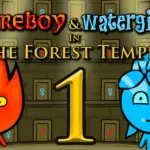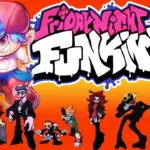Noragami, a popular manga and anime series, has captivated audiences with its unique blend of supernatural elements, action-packed sequences, and compelling character development. However, what truly sets this series apart is its masterful integration of humor within its darker themes. This delicate balance between light-hearted moments and serious undertones creates a rich, multifaceted narrative that keeps readers and viewers engaged throughout the story.
The Essence of Noragami’s Storytelling
At its core, Read Noragami Manga Free Online tells the story of Yato, a minor god of calamity struggling to gain recognition and followers in the modern world. Alongside his human friend Hiyori and his Regalia weapon Yukine, Yato navigates the complex realm of gods, spirits, and humans while battling his own troubled past. The series explores themes of identity, belonging, and the nature of divinity, all while maintaining a surprisingly humorous tone.
Balancing Light and Dark
The manga’s ability to seamlessly transition between comedic moments and intense, often dark scenes is a testament to the skill of its creators, Adachitoka. This balance is crucial in preventing the story from becoming overwhelmingly grim or losing its emotional impact. The humor in Noragami serves multiple purposes: it provides relief from tension, develops characters, and often highlights the absurdity of certain situations within the supernatural world.
Character-Driven Humor
Much of Noragami’s humor stems from its well-developed characters and their interactions. Yato, despite being a god, is often portrayed as a bumbling, money-hungry individual with delusions of grandeur. His antics, such as writing his phone number in public restrooms or dramatically posing for non-existent cameras, provide a stark contrast to the serious god he becomes during battles.
Subverting Expectations
The series frequently subverts reader expectations by presenting divine beings with very human flaws and quirks. This approach not only generates humor but also makes the characters more relatable and three-dimensional. For instance, the powerful war god Bishamon is shown to have a soft spot for cute things, while the aloof and mysterious Kazuma has moments of comical exasperation when dealing with his fellow Regalia.
Humor as a Coping Mechanism
In Noragami, humor often serves as a coping mechanism for characters dealing with traumatic experiences or difficult situations. This use of comedy reflects real-life strategies people employ to navigate challenging circumstances, adding depth to the characters and making their struggles more authentic.
Yato’s tendency to crack jokes or act foolishly in serious situations can be seen as a defense mechanism, masking his insecurities and past traumas. Similarly, Yukine’s sarcastic remarks and teenage attitude often hide his fear and uncertainty as a newly-formed Regalia. By incorporating these moments of levity, the manga allows readers to connect with the characters on a more personal level, making their hardships and growth all the more impactful.
Satirical Elements in Noragami
Beyond character-driven humor, Noragami employs satire to comment on various aspects of Japanese society and mythology. The series often pokes fun at the commercialization of religion, the bureaucracy of the divine realm, and the disconnect between ancient gods and the modern world.
Modern Twists on Mythology
One of the most entertaining aspects of Noragami is how it reimagines traditional Japanese deities in a contemporary setting. Gods are shown using smartphones, worrying about their social media presence, and dealing with budget constraints. These modern twists not only provide humor but also serve as a clever commentary on the evolving role of spirituality in today’s society.
Visual Humor in Manga Storytelling
As a visual medium, manga allows for unique opportunities to incorporate humor through artwork. Noragami takes full advantage of this, using exaggerated facial expressions, chibi-style drawings, and visual gags to enhance its comedic moments. These visual elements work in tandem with the written dialogue to create a more immersive and entertaining reading experience.
The series also employs sudden shifts in art style to emphasize humorous situations. For example, a serious conversation might suddenly be interrupted by a panel of Yato drawn in a simplistic, comical style, effectively breaking the tension and catching readers off guard.
The Impact of Humor on Noragami’s Themes
While noragami.mobi humor is undoubtedly entertaining, it also serves a deeper purpose in reinforcing the manga’s central themes. The juxtaposition of light-hearted moments with darker elements highlights the duality present in both the divine and human worlds. This contrast emphasizes the series’ exploration of good and evil, the nature of humanity, and the blurred lines between mortals and gods.
Humanizing the Divine
By portraying gods and spirits with human-like flaws and quirks, Noragami’s humor helps to deconstruct the notion of infallible deities. This approach allows the series to delve into complex questions about faith, worship, and the responsibilities of both gods and humans in maintaining balance in the world.
Conclusion: A Perfect Blend of Laughter and Depth
Noragami’s success lies in its ability to weave humor seamlessly into its narrative without undermining the gravity of its themes. This delicate balance creates a rich, multifaceted story that resonates with readers on multiple levels. The series’ humor not only entertains but also serves as a tool for character development, social commentary, and thematic exploration.
As manga fans continue to be drawn into the world of Noragami, it’s clear that the series’ unique approach to blending comedy with darker elements has struck a chord. The manga’s ability to make readers laugh one moment and reflect deeply the next is a testament to the power of well-crafted storytelling in the medium.
Have you experienced the perfect balance of humor and depth in Noragami? Share your thoughts on how the series’ comedic elements enhance its storytelling and themes in the comments below!

































